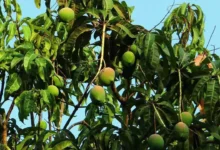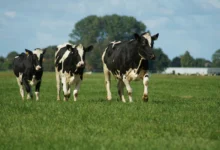-
Karnal has so far recorded 6.9 LMT of wheat arrivals
Farmers in the area are actively involved in the wheat harvesting season, using combine harvesters…
Read More » -

-

-

-

-
UP STATE

LS polls: Kannauj-based SP head Akhilesh Yadav submits nomination papers
Kannauj: Akhilesh Yadav, the head of the Samajwadi Party, submitted his nomination papers for the…
Read More » -

-

-

-
BIHAR

Friday voting is encouraged, according to singer Maithili
Bhagalpur: During a candle march on Wednesday, district officials—including district magistrate-cum-district officer Nawal Kishor Choudhary,…
Read More » -

-

-

-
ENTERTAINMENT

Exclusive: Taha Shah expects that this series will be his…
The magic that Sanjay Leela Bhansali has worked on his TV series Heeramandi: The Diamond…
Read More » -
ENTERTAINMENT

Exclusive: Fardeen Khan remembers that in the 2000s, Sanjay Leela…
In Sanjay Leela Bhansali’s ambitious drama series Heeramandi: The Diamond Bazaar, Fardeen Khan is scheduled…
Read More »
-
INTERNATIONAL

Iran and Pakistan finalize their free trade pact as the…
ISLAMABAD: Following the US’s warning to Pakistan about the possibility of penalties for doing business…
Read More » -

-

-

-

-
HEALTH

Weight Loss Advice: 5 Healthy Ways To Lose Extra Pounds…
Face fat might sometimes decrease while we are trying to lose weight. To lose fat…
Read More » -

-

-

-
LIFESTYLE

Coffee during Pregnancy: Should Expectant Mothers Drink It? Five Myths…
Each pregnancy is a unique experience that is unique to the individual. This is the…
Read More » -

-

-

-
SPORTS

A cricket match was arranged to raise awareness about SVEEP
Here today, the Press Club of Kullu and the district government played a friendly game…
Read More » -
SPORTS

T20 World Cup: Ramjani thinks Ugandan players are prepared for…
Mumbai Batting all-rounder Alpesh Ramjani believes that a self-assured group of Ugandan cricket players are…
Read More » -
SPORTS

He Doesn’t Fit The Middle Order: Rishabh Pant’s New Batting…
After a game-winning knock in the 2024 Indian Premier League (IPL) match between the Delhi…
Read More » -
SPORTS

IPL2024: Rasikh Salam of the Delhi Capitals received criticism after…
Rasikh Salam Dar, a bowler for the Delhi Capitals, has come under fire for overreacting…
Read More » -
SPORTS

At 103 years old, CSK Superfan S Ramdas Is Taking…
There are fans and superfans in Chennai, but not many of them are beyond any…
Read More »



























